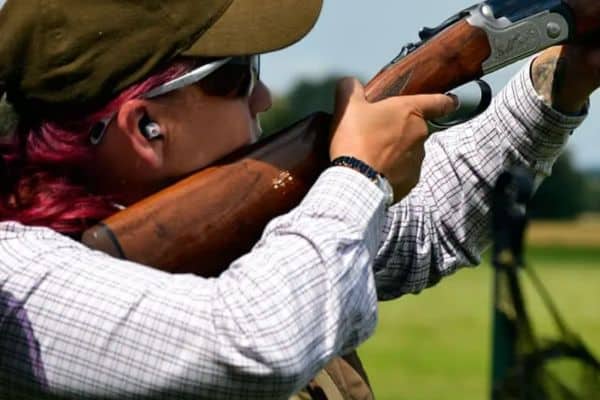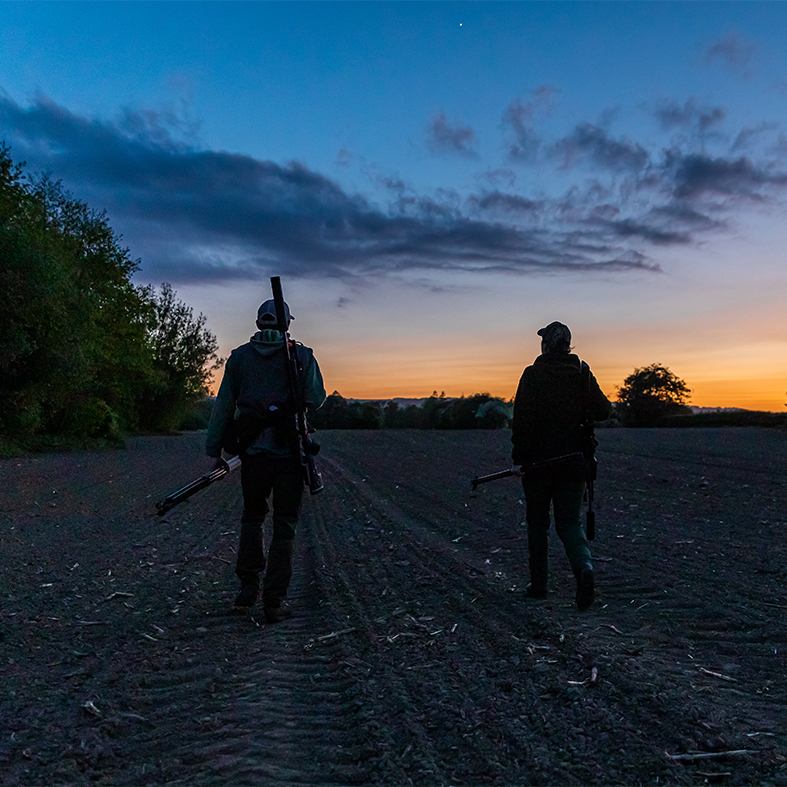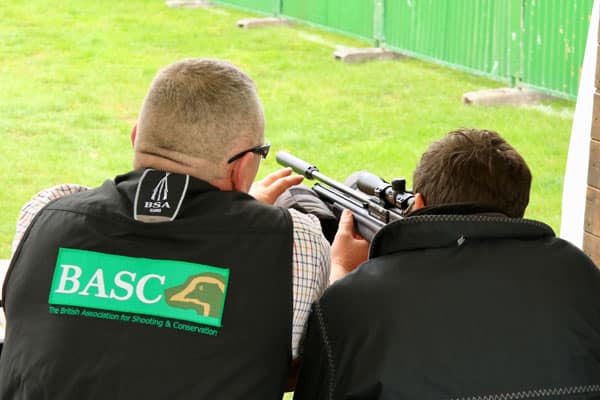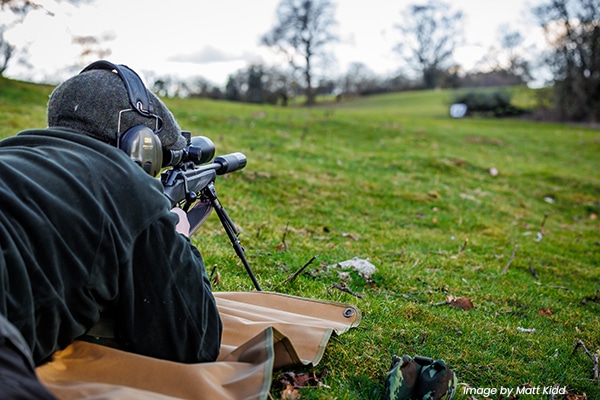
Shotgun safe shot – theory test
The free test provides you with a chance to demonstrate you have the knowledge on how to use shotguns confidently and safely in the field.
Get information on the legal shooting season for mammals and birds in the UK.
Apply for funding for your project or make a donation today
Comprehensive information and advice from our specialist firearms team.
Everything you need to know about shotgun, rifle and airgun ammunition.
Find our up-to-date information, advice and links to government resources.
Everything you need to know on firearms law and licensing.
All the latest news and advice on general licences and how they affect you.


Home » Deer management » Deer Courses » DMQ Night Shooting Certificate
The purpose of this certificate is to demonstrate that practitioners in the field of deer management have the skills and knowledge to cull deer safely, humanely and legally at night.
The course is aimed at those deer managers operating in areas where night licenses are being more frequently issued to try and reduce and maintain local deer populations.
Due to the skillset involved in night shooting of deer, there will have to be a significant base knowledge for the target audience of this course. There will be a prerequisite for all candidates to this course to have completed the DSC1 to demonstrate a base knowledge of deer behaviour and ecology, as well as to prove a basic aptitude and safety level with firearms.
Given the current licensing parameters for night shooting, it is likely that many candidates attending will have also achieved their DSC2.

View the latest courses
There are 3 main learning outcomes to this certificate, by gaining the qualification the holders will:
This section gives details of the scope of content to be covered to ensure that all the learning outcomes can be achieved.
Topics:
1.1 Be able to identify different commonly encountered species at night,
1.2 Be able to safely handle firearms at night in a range of scenarios,
1.3 Be able to identify and mitigate risks and hazards when shooting at night
1.4 Be able to safely, humanely and accurately engage targets at night.
This learning outcome is designed to provide a basic knowledge and skillset around positively identifying targets at night, as well as safely and humanely engaging them. It will outline the key factors in determining species and sex at night, a heightened awareness of firearms safety along with the increased risks encountered when shooting at night, and will provide a set of base skills for safely and accurately shooting at night.
Commonly encountered species
6 UK deer species- Red, roe, fallow, sika, muntjac, Chinese water deer. Badgers, foxes, rabbits, hares, domestic animals, livestock.
Safely handle firearms
Safe operation and handling, foot stalking safety, Vehicle safety, shooting from a vehicle, working with others.
Identify risks and hazards
Identifying risks during daylight hours, negating/dealing with risk, communication plans, risk assessments
Safely shoot targets at night
On foot- various shooting positions and aids, From a vehicle- various shooting positions and safety, assessing distance and backstops, shot placement, accuracy with different optics
Topics:
2.1 Understand the relevant deer legislation of the devolved nations with an emphasis on night shooting legislation.
2.2 Understand the basics of the licensing authorities and frameworks that allow night shooting of deer.
This learning outcome looks at the legislature and regulation surrounding the shooting of deer at night. It aims to provide a base knowledge of the legislations of relevant devolved nations, to include their individual positions on the taking of deer at night.
This LO will also provide an understanding of the various licensing regimes that exist to permit the shooting of deer at night, including the regulatory bodies involved, licensing conditions and requirements.
Deer Legislation
English/Welsh Deer Act (1991 as amended), Deer (Scotland) Act 1996, Deer (Firearms etc.) (Scotland) Order 1985, Wildlife (Northern Ireland) Order 1985, what is classed as night shooting, when can it be done.
Licensing authorities
Natural England, Natural Resources Wales, NatureScot, DAERA.
License frameworks
Reasons for night shooting- damage limitation, public health and safety, preserving natural heritage. Specific conditions- Best Practice adherence, optics choice, recording/reporting, auditing.
Topics:
3.3 Understand the different options for night shooting methods,
3.4 Understand the different options for night shooting equipment,
3.5 Understand the limitations and benefits of each method and piece of equipment used in the night shooting of deer,
3.6 Demonstrate proficiency across a range of scenarios and with different equipment,
3.7 Understand the basics of carcass handling, extraction and transport at night.
This learning outcome is designed to provide a base knowledge of the most common methods and equipment choices used for night shooting. It aims to provide candidates the opportunity to gain proficiency with thermal imaging, IR based night vision and red/white/green light-based night shooting, whilst understanding the benefits and limitations of each respectively. The unit will also touch upon carcass handling. Whilst most of this will be a DSC1 recap, there will be specific sections on differences at night, such as follow up and knife safety.
Methods of night shooting
On foot- use of bipods, sticks, different team member roles, individual landholdings, landscape scale collaboration
Night shooting equipment
Spotting equipment- Thermal imaging, IR based night vision, lamp with/without colour filters/bulbs. Rifle mounted optics- Thermal imaging scopes, IR based night vision scopes, Traditional telescopic scopes, Day/night hybrid optics. Limitations of each- Quarry ID, “stealth”, deer behavior, backstop/clear shot ID, Zeroing differences, costs
Carcass handling
Basic hygiene, health and safety implications, follow up, extraction, transport, carcass storage.
Exact details of how this certificate is delivered are open for each Centre to decide but it is envisaged that this may include a blend of online, classroom and field based, ideally with a good degree of time allocated to in-field learning to hone practical skills and knowledge.
It will be essential centres check that candidates have the prerequisite knowledge to benefit from the course.
Ideally the course would only take one day face-to-face to complete, opening it up to more candidates. The depth of the course would mean that pre-course online learning may be a huge help and allow more time in the field.
A range of suggested resources is provided at the end of this document.
The assessment for this course will be somewhat similar to that of a DSC1 course. The breakdown of assessments is below.
Given that quarry ID is a huge part of any night shooting, candidates will be shown a series of photos and videos taken through various types of commonly used night shooting equipment (namely thermal imaging, IR based night vision and red lamp). They will be asked to correctly identify the species and sex of the animal, thus demonstrating the ability to correctly ID animals in a night shooting scenario.
Candidates will be presented a series of multiple-choice questions, covering a range of topics (with the key ones being Law and legislation, Licensing systems, safety in the field, humane shooting etc.) with the expectation that they can correctly answer at least 70% of the questions.
Ideally, the practical learning section of this course will allow candidates to get “hands-on” with the 3 main methods for night shooting (thermal, NV, Lamp). They will be asked to pass a shooting test with one of these 3 (their choice). The shooting test will consist of:
An optional 3 shots at a zeroing target at 100m
2 shots from 100m (prone) into a zero target
2 shots from 100m from a vehicle into a zero target
2 shots from 70m from sticks into a zero target
2 shots from 20m into a 2inch zero targ
Achieving this would demonstrate competency across most night shooting scenarios.
Similar to the DSC1 safety test, a range of targets would be placed in-field in different positions, angles, group settings etc. demonstrating the candidate’s knowledge of backstops, shot placement, firearms safety and animal welfare.

The free test provides you with a chance to demonstrate you have the knowledge on how to use shotguns confidently and safely in the field.

This course will equip the candidate with the knowledge, understanding, and awareness of a basic airgun instructor.

Deer stalking is a rapidly growing pastime in the UK which is hardly a surprise but how can you get started?